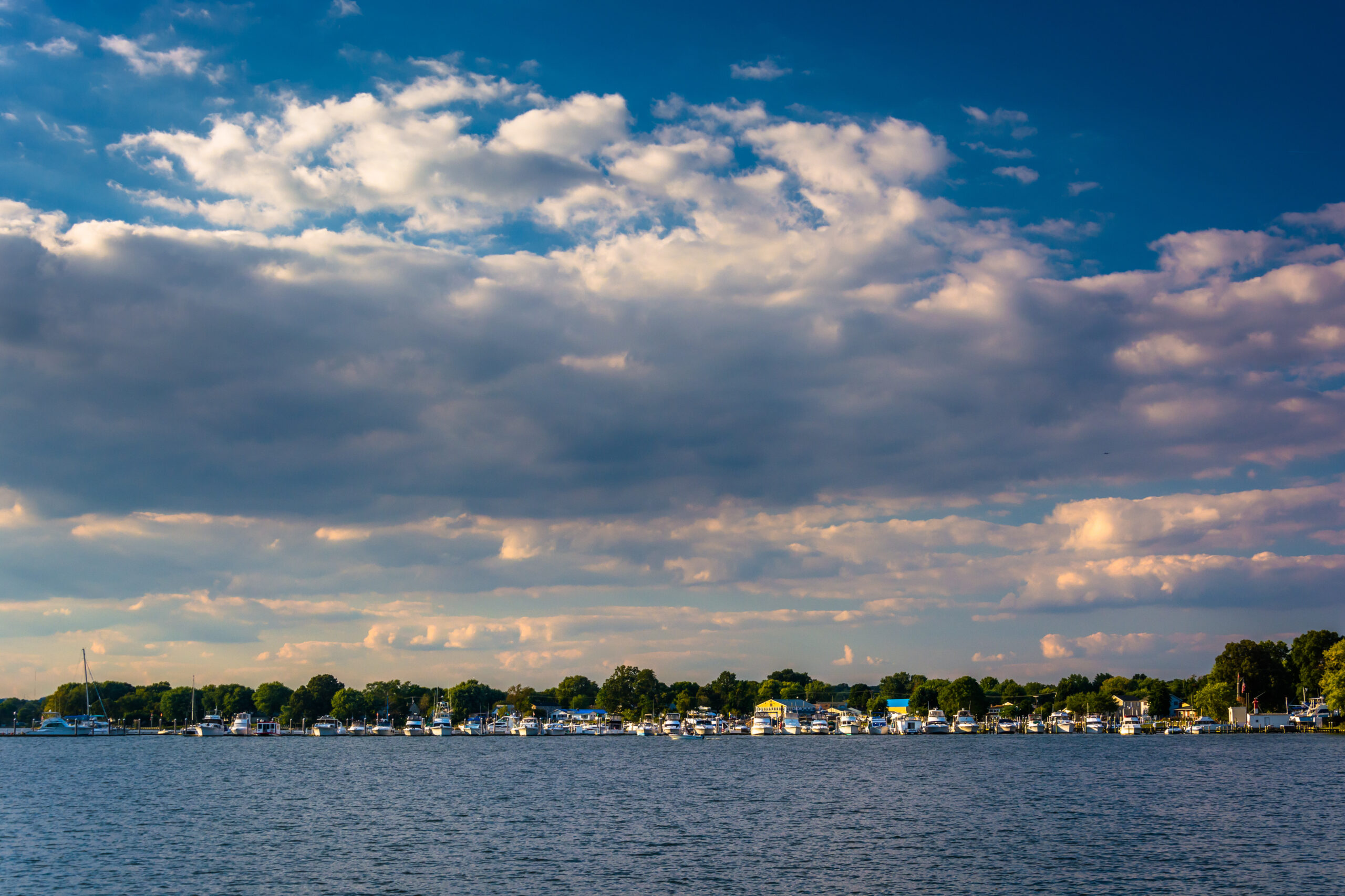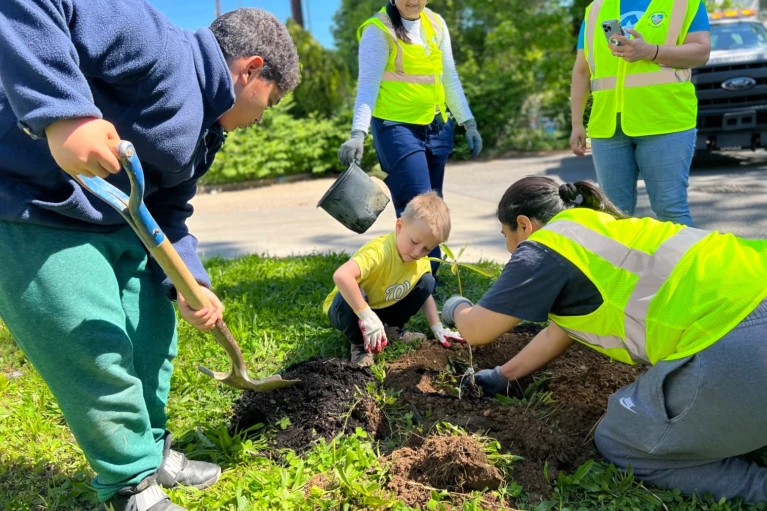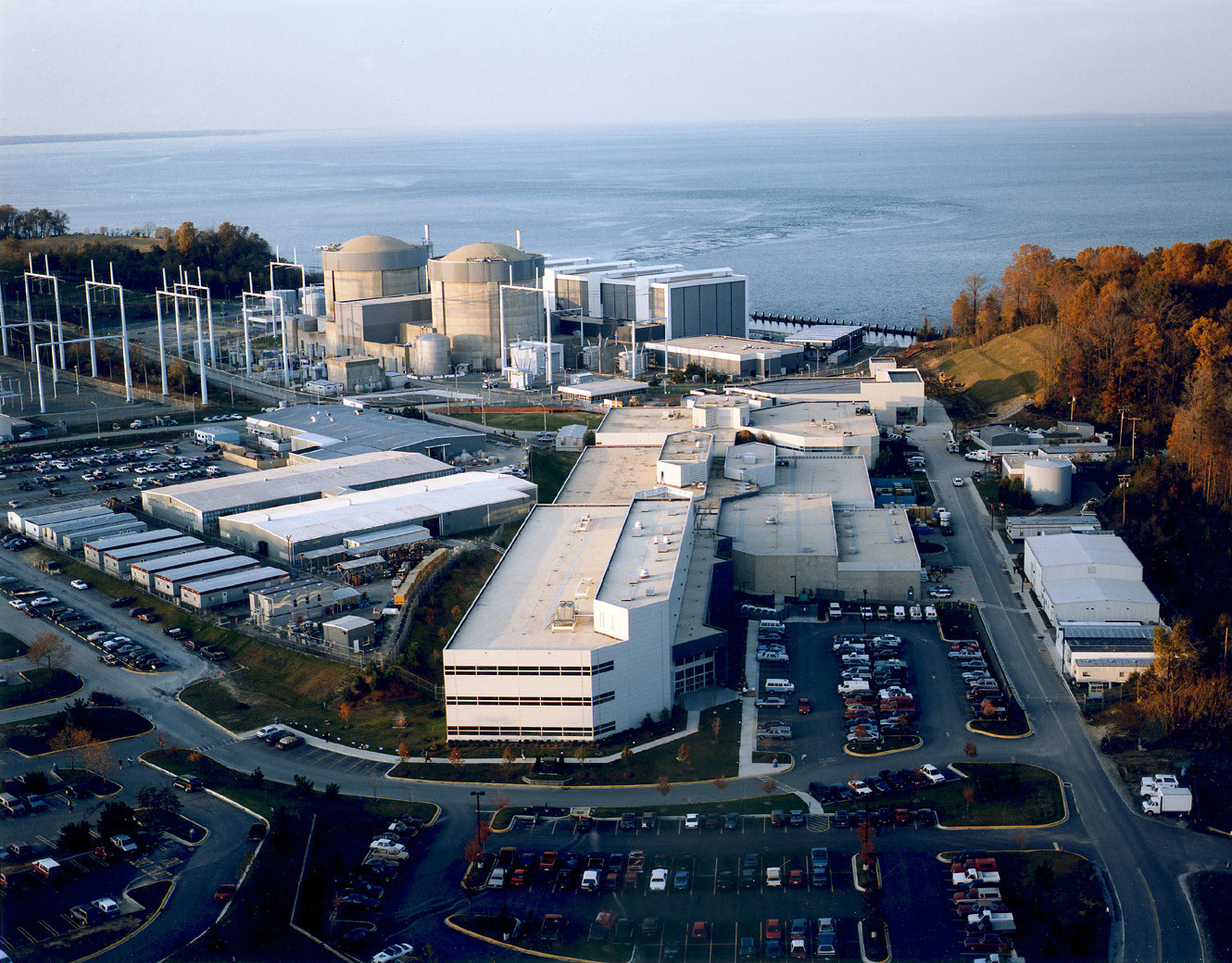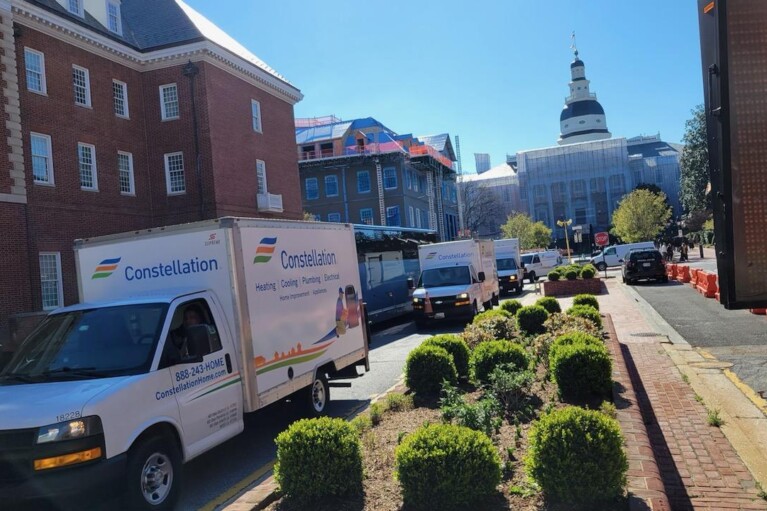Sample This: Disgruntled Residents Monitor Back River for Pollution

By Timothy B. Wheeler
Karen Wolf’s family has owned a house on Baltimore’s Back River since the 1920s. Generations have grown up there, on and in the water.
Lately, though, Wolf has been questioning whether it’s safe to let her grandchildren go out on their pontoon boat. She’s worried they might get sick from being splashed by water tainted with sewage from the city’s problem-plagued wastewater treatment plant upriver.
“The river used to be teeming with people and activities,” she said. “What are we going to do if we can’t use our river?”
Residents living along the waterfront in Baltimore County have been up in arms since March, when dead shad and “black poop” were reported in the river near the Back River wastewater treatment plant. An inspector from the Maryland Department of the Environment visited the plant, where he found badly broken equipment, poor maintenance and multiple pollution violations.
The plant’s woes have drawn the scrutiny of the Back River Restoration Committee, a nonprofit that residents formed in 2009 with the aim of restoring the health of the tidal portion of the river.
Frustrated by what they see as a lack of urgency or openness by state and local officials, the committee has teamed up with the environmental group, Blue Water Baltimore, to begin monitoring the river’s water quality themselves.
Back River has long been considered one of, if not the most polluted, of the Chesapeake Bay’s tributaries. Every year since 1986, the Back River and nearby Patapsco River, which together bracket Baltimore, have earned the worst scores in the Bay health report cards issued by the University of Maryland Center for Environmental Science.
In recent years, though, UMCES detected an “improving trend” in the region. Residents thought they saw the same uptick, which seemed to coincide with a $285 million upgrade of the nutrient removal facilities at the city-owned Back River plant.
“We could see the water clarity was visibly improving,” said Desiree Greaver, the Back River Restoration Committee’s project manager. The most obvious problems, they thought, were litter washed into the river from the heavily developed watershed and swarms of “midges,” gnat-like flies that plague boaters and waterfront residents in warm weather.
Then came news last August that state inspectors, acting on a tip from Blue Water Baltimore, had discovered serious pollution violations at the city’s wastewater treatments plants on the Back and Patapsco rivers.
MDE demanded immediate corrective actions, then filed suit against the city in January. By late March, with a new inspection finding still more problems with equipment failures and maintenance lapses, state regulators seized control of the plant.
Residents’ alarm spiked in mid-April, when water samples analyzed by Blue Water Baltimore detected elevated bacteria in the river, including one reading upstream of the wastewater plant that was more than 180 times greater than what’s considered safe for human contact.
That prompted MDE and Baltimore County to announce they would begin regular sampling for bacteria in the river. MDE joined the state Department of Health to warn the public to avoid contact with Back River.
At the same time, the county posted a “water contact advisory” sign in Cox’s Point Park across the river from the treatment plant. The sign has since disappeared, to the dismay of activists and residents. Greaver said she’s been unable to get an explanation for its removal.
Since then, water samples have mostly showed low bacteria levels, though MDE and Blue Water Baltimore both have reported intermittent spikes in bacteria above the safe level at the outfall as well as up and downriver from it.
But David Lykens, director of the county’s Department of Environmental Protection and Sustainability, said that since late April, “we’re finding pretty good levels, actually swimmable levels,” in the open river.
He suggested that the high bacteria readings obtained by others were misleading, likely the result of heavy rains a day or two before sampling. Rainstorms tend to trigger sewage overflows from the aging, leaky sewer systems in the city and county. They also wash animal waste and other organic material off streets and parking lots into the river’s tributaries.
Nevertheless, Blue Water Baltimore and the Back River committee have recruited local residents to collect water from their piers, shoreline or favorite spots along the river. Alice Volpitta, Blue Water’s Harbor Waterkeeper, said the effort is an extra check on water quality, but it’s aimed mainly at engaging local residents in the river’s welfare.
“The folks in this area, they’re experiencing what people in Baltimore city have been dealing with for decades,” she said. Blue Water Baltimore has filed its own suit against the city over pollution violations at its treatment plants and has sought to hold the city accountable for its sewer system overflows.
While many Baltimore County residents think the river’s woes are solely the city’s fault because of the treatment plant, Volpitta said, it’s their problem as well. Back River and most of its watershed is in the county.
Under state consent decrees, the city and county have collectively spent billions of dollars in the past 20-plus years to fix their overflow-prone sewer systems. The county also has spent more than $16 million since the 1990s on projects to limit stormwater pollution.
On a warm day in mid-May, about 30 county residents showed up at Cox’s Point Park to pick up water sampling kits and learn how to use them. They planned to collect water from their docks or favorite waterfront spots just before Memorial Day weekend and publicize the results.
“Your voices combined,” Volpitta told them, “that collective voice of all of you, saying, ‘I care, this is what the water quality is like off my dock where I recreate, where I boat,’ all of those voices combined are going to result in change.”
Among those present to learn how to sample the river was Karen Wolf.
“We have to hold them accountable,” she said.
Of the 28 near-shore water samples collected, seven had bacteria levels above what MDE deems safe for human contact, Blue Water reported. Two were near the wastewater plant, the rest downriver.
Bacteria levels fluctuate often, so the results offer just a snapshot of water quality. But to Angela Haren, an attorney with the Chesapeake Legal Foundation representing Blue Water, the one-time water samples reinforce other sampling showing high bacteria levels in the river.
Regardless of whether the contamination is coming from the plant or some other source upriver, Haren said, “There needs to be signage warning the public that the area is known to have unsafe levels of bacteria and to avoid contact with the water, particularly during the 48 hours after a rain.”




 Creative Commons Attribution
Creative Commons Attribution